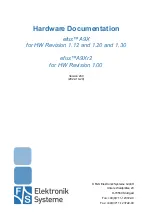3.4.1 Effects of SMD Discrete Parasitics and Losses
Inductors are the most critical elements in matching networks due to their higher cost and lower Q compared to SMD capacitors. There
are three basic SMD inductor types: wirewound, metal-film-based, and multilayer. A good description of SMD inductors can be found in
Item 2 of
6. References
. The wirewound inductor has the best Q, while the multilayer type has the worst. The better Q (i.e., lower loss)
helps achieve low insertion loss in low-pass ladder structures where the inductor is the series element. Unfortunately, the price of the
wirewound inductor is the highest, typically several cents, while the multilayer is the least expensive, typically much less than a cent
when purchased in high volume. Film type inductors are between these in cost, so they are a good compromise at 2.4 GHz in terms of
price and Q.
SMD parasitics are investigated in the ladder two-element match employing 0402 SMD elements and a film type inductor. Simplified
equivalent circuits of the Murata SMD capacitance (1.4 pF) and film inductance (2.3 nH) are shown in the figure below. These simplified
equivalent circuits are only accurate at the fundamental frequency. For higher harmonic simulations, the measured S-parameters given
by the SMD manufacturer are used. Using these SMD models, the impedance differs slightly from the optimum Zload_opt = 23 + j11.5
Ω at the generator side of the match (see
Figure 3.4 2-Element Match Mistuning with Real SMD Elements on page 9
). To shift it
back to the optimum, a slight decrease of the parallel capacitance to 1.2 pF is required.
Figure 3.3. Equivalent Circuits of Real SMDs at the Fundamental Frequency
AN930: EFR32 2.4 GHz Matching Guide
2.4 GHz RF Matching Design Steps
silabs.com
| Building a more connected world.
Rev. 0.4 | 8







